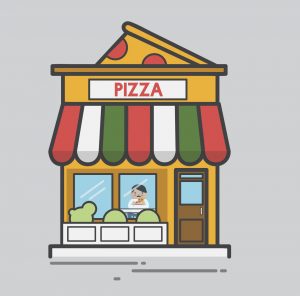 There is a common danger in homes, day care centers, and schools. What would often appear as a safe environment really is not. The danger presents itself in the form of unanchored furniture. This danger can lead to serious personal injuries and even the death of a child. When furniture is manufactured and distributed, there should be an expectation on the part of the manufacturers, distributors, and retail stores that this very items will be placed in homes, day care centers, and schools where children may be present. As such, it is important that the furniture if manufactured in a way that makes the furniture safe and steady rather than a hazard in which a terrible tragedy could happen on any given day.
There is a common danger in homes, day care centers, and schools. What would often appear as a safe environment really is not. The danger presents itself in the form of unanchored furniture. This danger can lead to serious personal injuries and even the death of a child. When furniture is manufactured and distributed, there should be an expectation on the part of the manufacturers, distributors, and retail stores that this very items will be placed in homes, day care centers, and schools where children may be present. As such, it is important that the furniture if manufactured in a way that makes the furniture safe and steady rather than a hazard in which a terrible tragedy could happen on any given day.
It has been reported by Consumer Product Safety Commission that over 300,000 furniture chests were recalled after a child was killed by an unanchored chest. It is reported that as many as 70 children every day are injured by fallen furniture and, every two weeks, fallen furniture results in the death of one child. Chests, desks, and cabinets can tip over if a child climbs on it and the piece is not secured or made properly. However, it’s not just climbing that can result in danger. In some cases, a piece of furniture can fall over if too many drawers are open.
The responsibility falls upon the manufacturer of the furniture to ensure that, even if unanchored, their pieces do not actively pose a danger to children. Some articles of furniture come pre-weighted so that consumers do not have to weight it to make it more safe. There is also a responsibility that on the part of the distributors and retail stores, like Target and Walmart. If distributors and retailers are aware of any past injustices or injuries caused by a certain manufacturer’s furniture, they should refrain from distributing them. The ultimate responsibility belongs to the Consumer Product Safety Commission, or CPSC. They decide what products get recalled and when. If unweighted furniture seriously injures or kills one child, the CPSC should take action as quickly as possible to get it out of people’s homes.
 Child Injury Lawyer Blog
Child Injury Lawyer Blog





 In the United States, families travel at different times of the year including summer break, winter break and spring break. During most trips, the vacation is filled with fun, laughter, and good times. It is often a pleasurable adventure to be able to stay in a hotel, resort or motel. Unfortunately, some visits to hotels end very poorly in the firm of personal injuries to a child. Is a hotel liable for all injuries that take place on premises? The simple answe is No. A hotel is not liable for all injuries or incidents but is responsible for the ones in which the following elements can be proved:
In the United States, families travel at different times of the year including summer break, winter break and spring break. During most trips, the vacation is filled with fun, laughter, and good times. It is often a pleasurable adventure to be able to stay in a hotel, resort or motel. Unfortunately, some visits to hotels end very poorly in the firm of personal injuries to a child. Is a hotel liable for all injuries that take place on premises? The simple answe is No. A hotel is not liable for all injuries or incidents but is responsible for the ones in which the following elements can be proved: